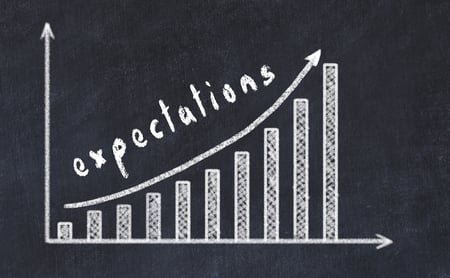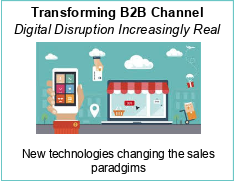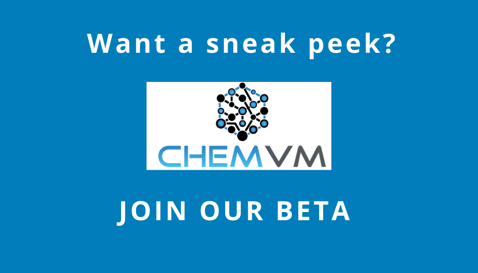The digital tidal wave is coming. Are you ready? (Part 1)
 Erik Viens
Erik Viens
In my nearly forty years working in the chemical industry globally, there’s hardly been a time when I’ve seen our industry face greater change than right now. As consumers, the way we buy books and groceries to how we rent lodging or find transportation has completely transformed, giving us the ability to fill online shopping carts or order and track pickup and deliveries within minutes of ordering them. It amazes me that I can buy a $14 book from anywhere in the world on any device in seconds, and I can find out exactly where it is in real-time, and when it’s arrived, be sent a picture of the book at my front door.
Meanwhile, neither buyers or sellers in the chemical industry have been afforded these same benefits of technology, and expectations of quality and service have remained mostly stagnant.
In contrast to the $14 book, a chemical customer who purchases a six-figure load of chemicals may not know what state or province it’s in or exactly when it will arrive. Sadly, until recently, we in the chemical industry have accepted this level of service. While consumer markets have been very successful at convincing us to expect immediate and consistent notifications on delivery of our $14 book on Amazon or arrival of our Uber® driver, we haven’t convinced ourselves to expect the same level of service in chemistry. As chemical customers and suppliers, we’re trained to expect much less. It’s time we change.

One can read Deloitte or McKinsey for elegant explanations and compelling reasons why the chemical industry has been slower to move forward into the age of digital change and greater service level expectations, but the market is now definitively at the tipping point of transformation. In fact, nearly five years ago, in Deloitte's October 2015 industry landscape and trends report for the Chemicals and Whole Distribution segment, among the six disruptive avenues to consider looking forward, one had the title "Transforming B2B Channel: Digital Disruption Increasingly Real - New technologies changing the sales paradigms", shown here:

So what is driving this transformation? There are three primary categories of market drivers, each with their own unique forces pushing this industry toward a technological revolution:
- Business
- Disruption of the value chain
- Big data analytics
- Globalization and consolidation
- Technology
- The Internet of Things, or IoT
- Cloud computing, computer applications, and advanced machinery
- Societal
- Next generation workforce
- Customers’ changing expectations for service
- Disruption and acceleration from COVID-19
As Randy Stone, the President of Transportation and Industrial at DuPont, recently stated during a webinar on the current and future state of chemical commerce, reference to the coming digital transformation in the chemical market, “I do think there is a tidal wave coming in this space, and COVID is only accelerating that.”
Business leaders of chemical companies, big and small, who prepare and adapt will not only survive but thrive through this “tidal wave” that is coming. To prepare, it helps to understand these market drivers in more detail.
In this first post, I'll cover the first category of Business drivers. In the second post, I'll talk about the other two categories of drivers and offer a call-to-action for chemical business leaders.
1. Business Drivers:
A key business driver shaking up the chemical space is the disruption of the value chain. In the past, chemistry was left to big brick-and-mortar chemical companies, and smallish local distributors with deep local relationships. Today people are open to the idea of creating products using chemistry, but many are unfamiliar with the chemical industry. They are bringing new ideas and creating products for narrow and specific niche segments that require chemistry. These product innovators need chemical service providers to help them bring these products to market, from formulation and processing to mass production and storage.
Take for example, a famous social twenty-one-year-old who became a billionaire by marketing cosmetics. What are the odds she and her celebrity family created these products in their backyard? Not likely. For sure they found service partners who could formulate, develop, and manufacture them. This is a change in the chemical space that hadn’t occurred when I first entered the industry, and it is a big opportunity for service providers to take advantage of.
A related business driver is growth of big data, and as a result, the need for analytics and intelligence through the consolidation and collaboration of all this data. The ability to take previously disconnected information and connect it by bringing business context and specificity to it is changing the industry. With access to data and business intelligence, companies are creating more systemic operating models that we as an industry didn’t have before, such as more individualized product variants, category management and segmentation.
Along with individual product innovators disrupting the value chain and big data analytics and business intelligence driving new operating models, a third business driver moving the chemical industry toward digital transformation are two trends that go hand-in-hand: globalization and consolidation. As the world gets smaller and markets open, opportunities arise, so that today, many more players understand how to source and leverage chemistry than in the past. While consolidation is gaining momentum in the space which would seem to lead to fewer players, in fact what’s really happening is an increase in companies searching to find chemical capabilities and services they can partner with to deliver more products for their markets.
In my next post, I'll cover both technological and societal market drivers contributing to this tidal wave that is coming to our industry. Spoiler alert: customer expectations are increasing and companies like ChemVM and others, are leading this digital transformation thoughtfully yet swiftly. I am hopeful the positive changes coming to the industry will help service providers, customers, and all who benefit from the chemical space.


